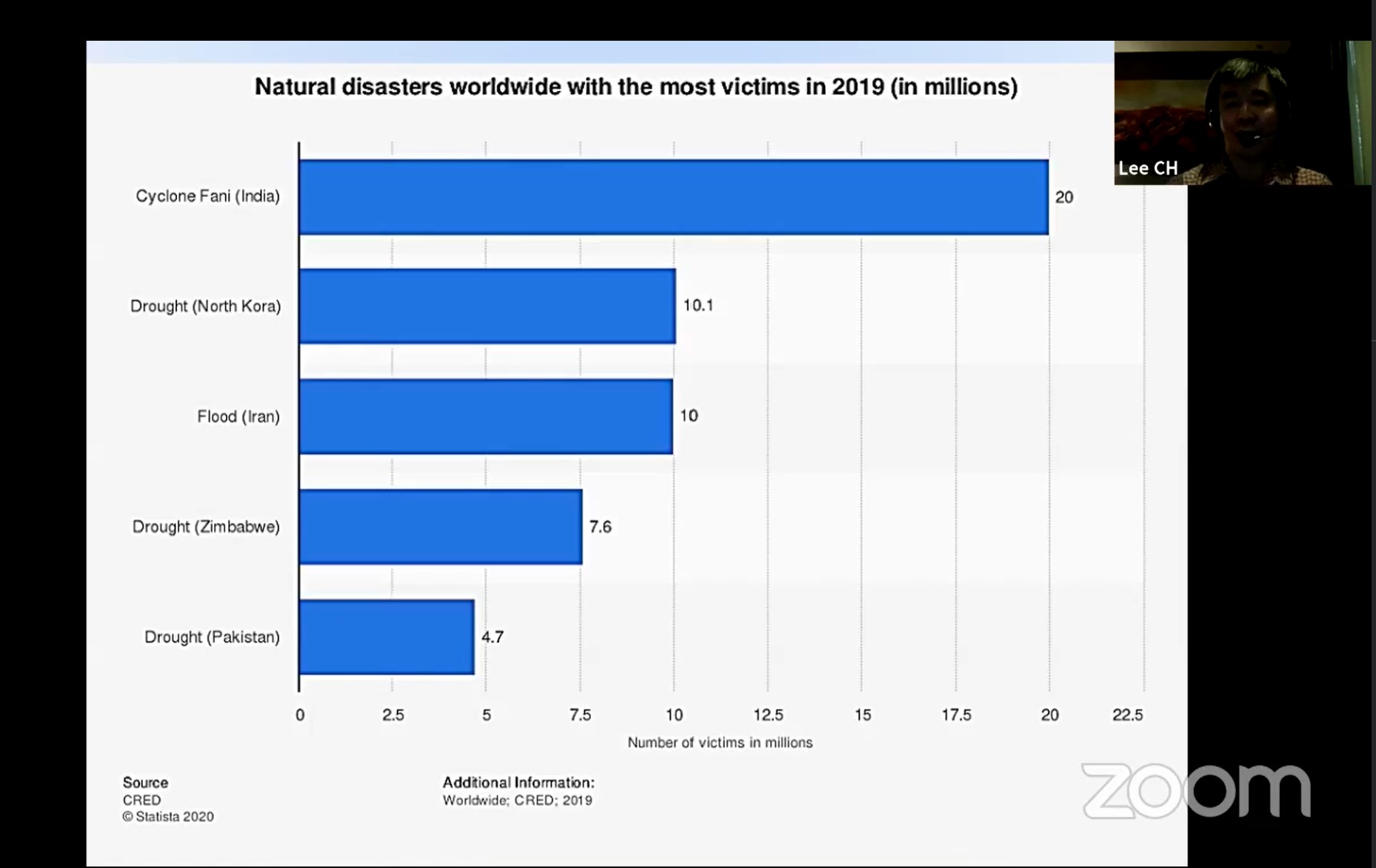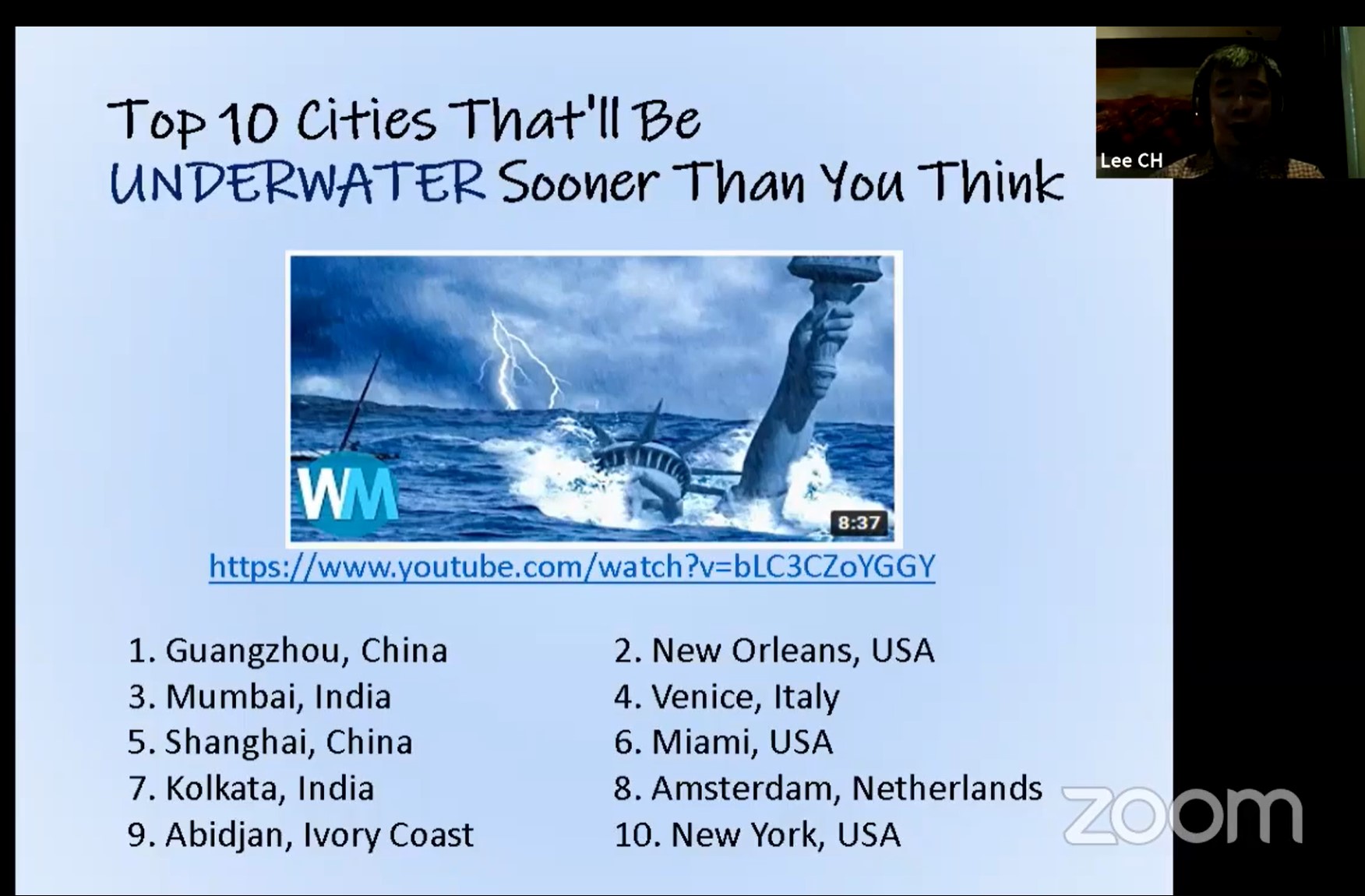
A variety of webinars were conducted during the e-KLESF 2020. One of the many webinars was “Where is our future habitat?” which aims to create awareness on the types of pollution that cause climate change and natural disaster as well as to discuss the challenges of habitat that mankind will face in the near future.
Speaking at the webinar was UTAR Centre for Foundation Studies of Kampar Campus Lee Chee Heong, who hopes to inspire youngsters to think of solutions to solve the problems of tomorrow. Chee began the webinar with a short clip of the movie called “2067” from an Australian science fiction film directed by Seth Larney based on some realities on earth. Lee then further discussed the benefits of an underwater city while examined the respective future skills, technology, and solutions to everyday problems.

Lee explaining the
numbers of victims from the natural disasters
He presented facts on the number
of disasters per year and type. “The number of disasters increases over the
year, especially floods. The increase in the number of disasters could be
due to the technology and communication that enable the reporting of the
cases. The type of disasters includes flood, storm, earthquake, extreme
temperature, landslide, drought, wildfire, volcanic activity and mass
movement.”
Lee also spoke about natural
disasters with the most economic damage worldwide in 2019 and the natural
disasters worldwide with the most victims in 2019. “We also face other
challenges such as pollutions, climate change, wildfires, degradation of
water quality, poor air quality, food crisis, social and security problems,
diseases and health issues, higher cost of living and many more,” added Lee.

Top 10 cities which
are sinking
It is predicted that in the next
ten years, the top global risk is still environmental issues such as extreme
weather, climate action failure, natural disasters, biodiversity loss and
human-made environmental disasters. “This global risk is defined as an
uncertain event that can cause negative global impact within the next ten
years,” said Lee.
Lee explained the possibility of
migrating to potentially habitable exoplanets and the estimated time to
reach the nearest habitable exoplanet which is 4.24 light-years, equivalent
to 64.7 million years and the cost it would incur. “Is earth still suitable
habitat for humans beyond the next 50 years? Do we have another option?”
questioned Lee. “One possible solution is to go underwater. The reason being
seawater covers 71 percent of the earth’s surface. It is quick, easy, and
cheaper compared to an exoplanet and many studies have been done on ocean
and marine. There are lesser natural disasters than on land. The criteria
for liveable underwater habitat would be uninterrupted fresh air, fresh
water, and food supplies. We also need energy supply sufficient physical
space, logistic, sustainable ecosystem as well as law and order,” as he
presented several underwater structures.
Aside from that, Lee also
presented some challenges of underwater habitat and possible environmental
impacts caused by underwater habitat as well as the intermediate solutions
for near future.
The webinar was followed by a
session of quiz where five lucky winners with the fastest and correct answer
were selected for the exclusive prizes.
![]()
Wholly owned by UTAR Education Foundation Co. No. 578227-M LEGAL STATEMENT TERM OF USAGE PRIVACY NOTICE